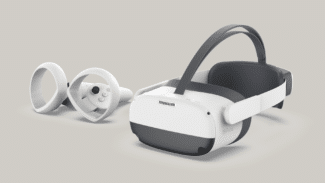At MWC 2022 this week, ByteDance and Qualcomm announced a collaboration on XR hardware and software.
ByteDance is the Chinese tech giant behind the TikTok social media platform. Last year it acquired Pico, a Chinese startup which launched the first standalone VR headset a year before Oculus Go. Pico’s latest model, Neo 3 Pro, has similar specs to Meta’s Quest 2 but isn’t sold to western consumers.

Qualcomm designs mobile chipsets which power the majority of Android phones and standalone VR headsets including Meta’s, HTC’s, and Pico’s. Qualcomm CEO Cristiano Amon said of the ByteDance partnership that “we’re collaborating on hardware/software to enable a global XR ecosystem” and developing an “XR device roadmap using the Snapdragon XR platform”. The company has also described its relationship with Meta as a partnership.
ByteDance CEO Liang Rubo said “We are excited about the fact that we will be working together on hardware, software, and technology roadmaps to enable the ecosystem for Pico. We look forward to our future Pico devices that are powered by the Snapdragon Spaces XR developer platform.”

While Meta develops its own tracking software for Quest, with Snapdragon Spaces Qualcomm offers these core technologies to device makers entering the AR/VR space, letting them focus on the hardware and content. Both Quest and Snapdragon Spaces offer positional tracking, hand tracking, and spatial anchors, but Spaces goes further with advanced features like plane detection, image recognition, spatial meshing, occlusion, and scene understanding.
This partnership could allow ByteDance to keep up with Meta, at least in the short term, by leveraging Qualcomm’s existing technology. But it’s unclear yet whether ByteDance actually intends to compete in the western consumer market, or instead stay focused on China.





